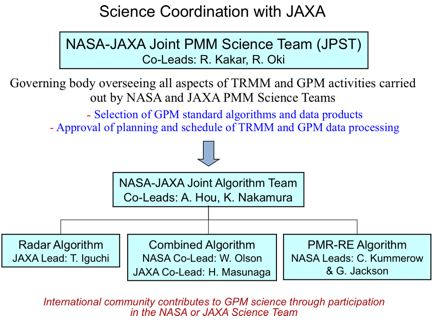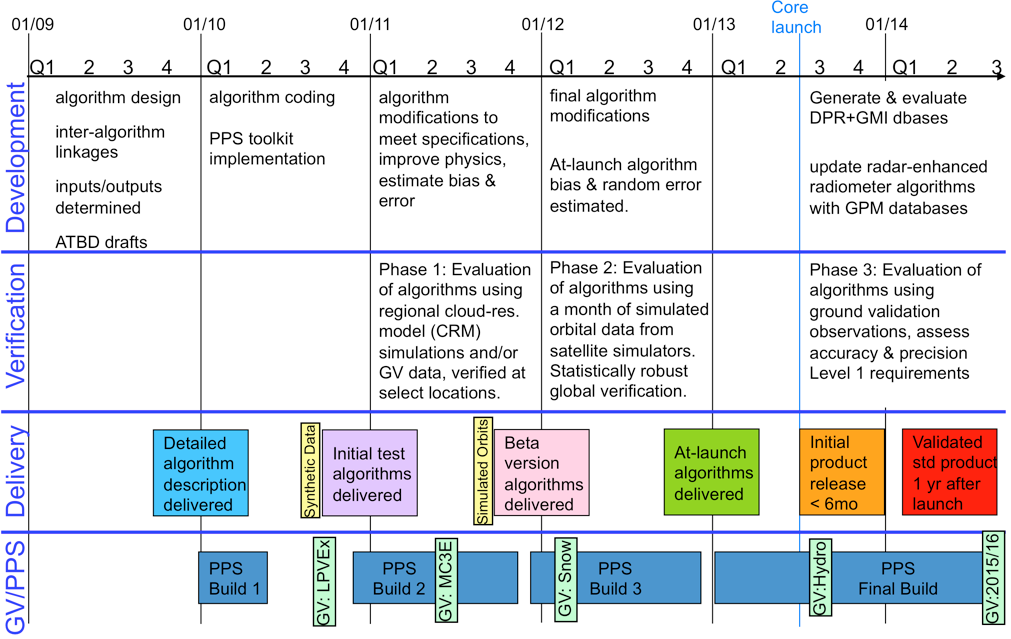Precipitation data sets, referred to as "products", are available at a variety of levels which denote the amount of processing that data has been through. These range from the raw instrument data to precipitation model outputs which are mathematically derived using the raw data as an input. Below are the definitions for each level: Level 0 Raw instrument data Level 1A Reconstructed, unprocessed instrument data at full resolution, time referenced, and annotated with ancillary information, including radiometric and geometric calibration coefficients and georeferencing parameters (i.e., platform...


